Best Time To Visit The Big Island And Save Money: Insider Tips
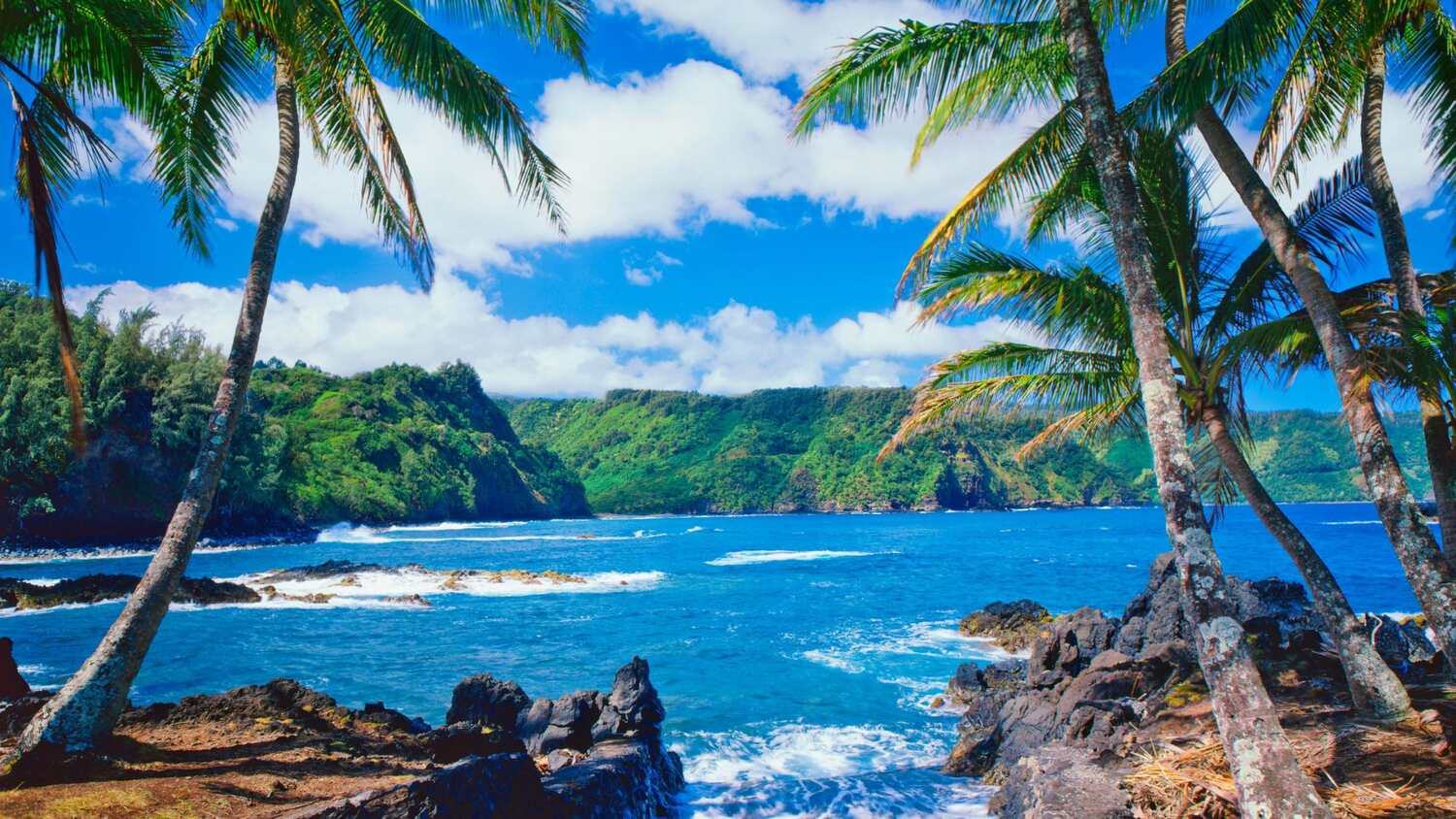

Aloha! | E Komo Mai
Planning a trip to the Big Island of Hawaii? The Big Island has something for everyone: volcanic landscapes, black sand beaches, snorkeling with manta rays, and coffee plantation tours.
But, as with any trip, timing is everything. That’s why you should consider the best time to visit the Big Island and save money while enjoying all this gorgeous island offers. Knowing when to visit this island paradise will help save money, beat the crowds, and enjoy ideal weather.
There’s a misconception that Hawaii is the same year-round. But it’s important to know each season on the Big Island offers its advantages. So when is the best time to visit the Big Island and save money? It really depends on your interests and how you want to experience it. Keep reading to understand what each season is like and the events happening.

The Best Time to Visit the Big Island for Each Traveler
Depending on your interest as a traveler, some months are better for visiting than others. So let’s break it down. When is the best time to visit the Big Island and save money if you want to see whales? Are you looking for fewer crowds, amazing weather, or lower prices? The rest of this guide will point you toward the best options for you.
Best Time to Visit the Big Island for Snorkeling
Snorkeling on the Big Island is amazing but high waves and stormy weather can create hazardous conditions for even the most experienced snorkeler. If you have your heart set on snorkeling while on the Big Island, your best bet is to visit between May through September when the ocean is typically the calmest. The ocean temperature hovers around 80 degrees in the summer and early fall, perfect for a nice dip in the water.
You can go snorkeling any time of year, but just remember there’s always a chance of cancellation, especially in the winter months due to ocean conditions. When thinking about where the best snorkeling spots are, you might also want to think about what time of year you will have the best chance of seeing the green flash.
Best Time for Whale Watching on the Big Island
Every year, thousands of humpback whales make their way from the cold Alaskan waters to the warm, tropical waters surrounding the Hawaiian islands to breed and give birth.
The peak time for whale watching is between January and February and runs from mid-December to the end of April. During these months the Sanctuary Ocean Count hosts a whale count and it’s during January and February that volunteers typically spot the most whales.
If you want to experience whale watching tours you will find no shortage of those available. Keep in mind that whale-watching tours are generally more expensive during peak season.
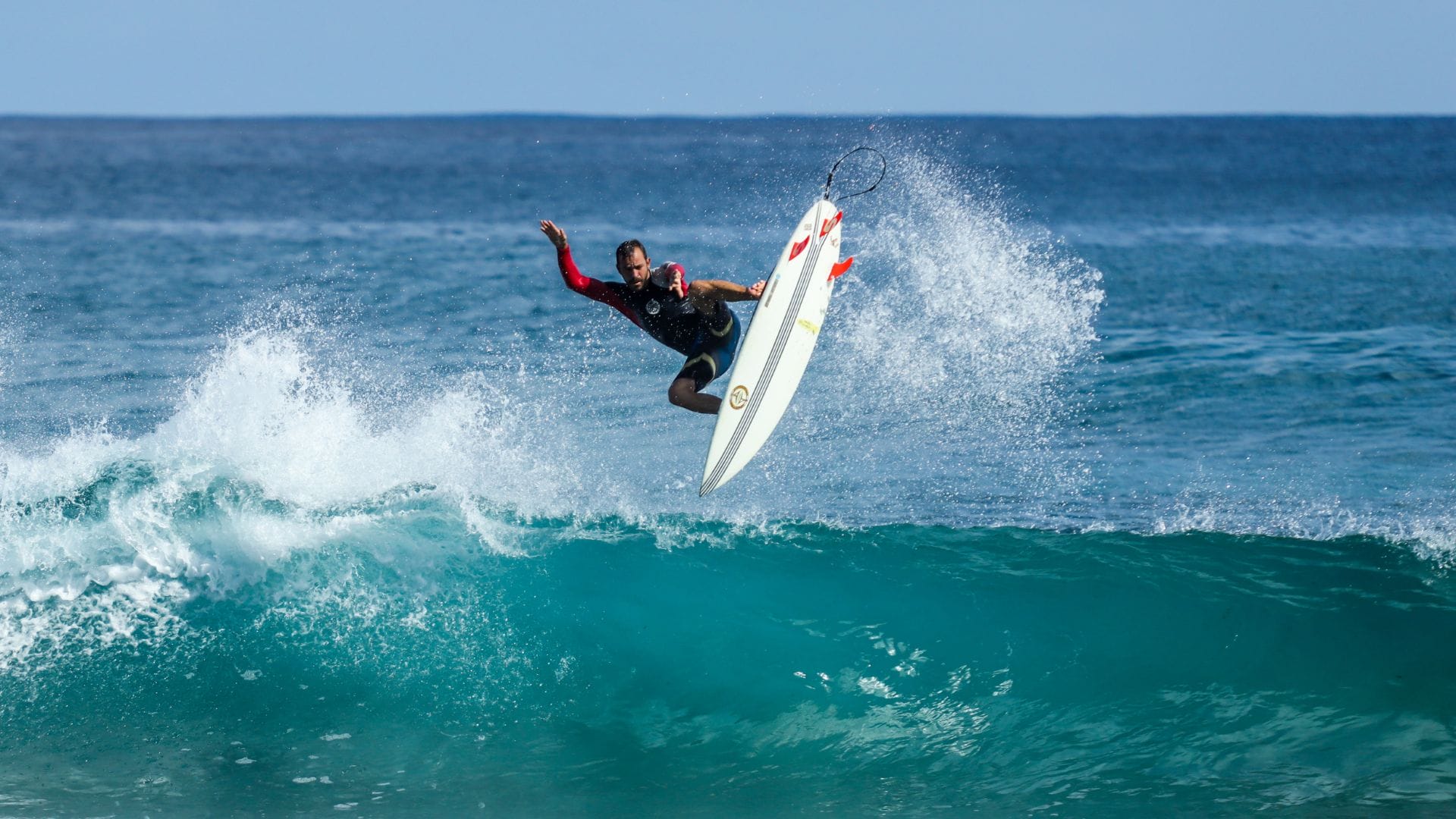
Best Time for Surfers to Visit
No matter when you visit the Big Island, surfers will find epic waves throughout the year. However, the winter months, specifically on north-facing shores, see larger waves and more favorable surfing conditions. Beginners should steer clear of these areas, as the waves can be extremely dangerous.

Best Time to Visit the Volcanoes on the Big Island
A visit to the Big Island isn’t complete without seeing Hawaii Volcanoes National Park, home to Kilauea volcano. You will be able to enjoy the amazing sites no matter what time of year you decide to go. Just be aware that the summit is at an elevation of about 4,000ft above sea level.
Winter will bring much cooler temperatures at higher elevations. The cooler temperatures will be great for hiking through the volcanic lava fields. If you plan on hiking, visiting Kilauea in the winter will be a great idea, as those black lava fields get pretty toasty in the summer.
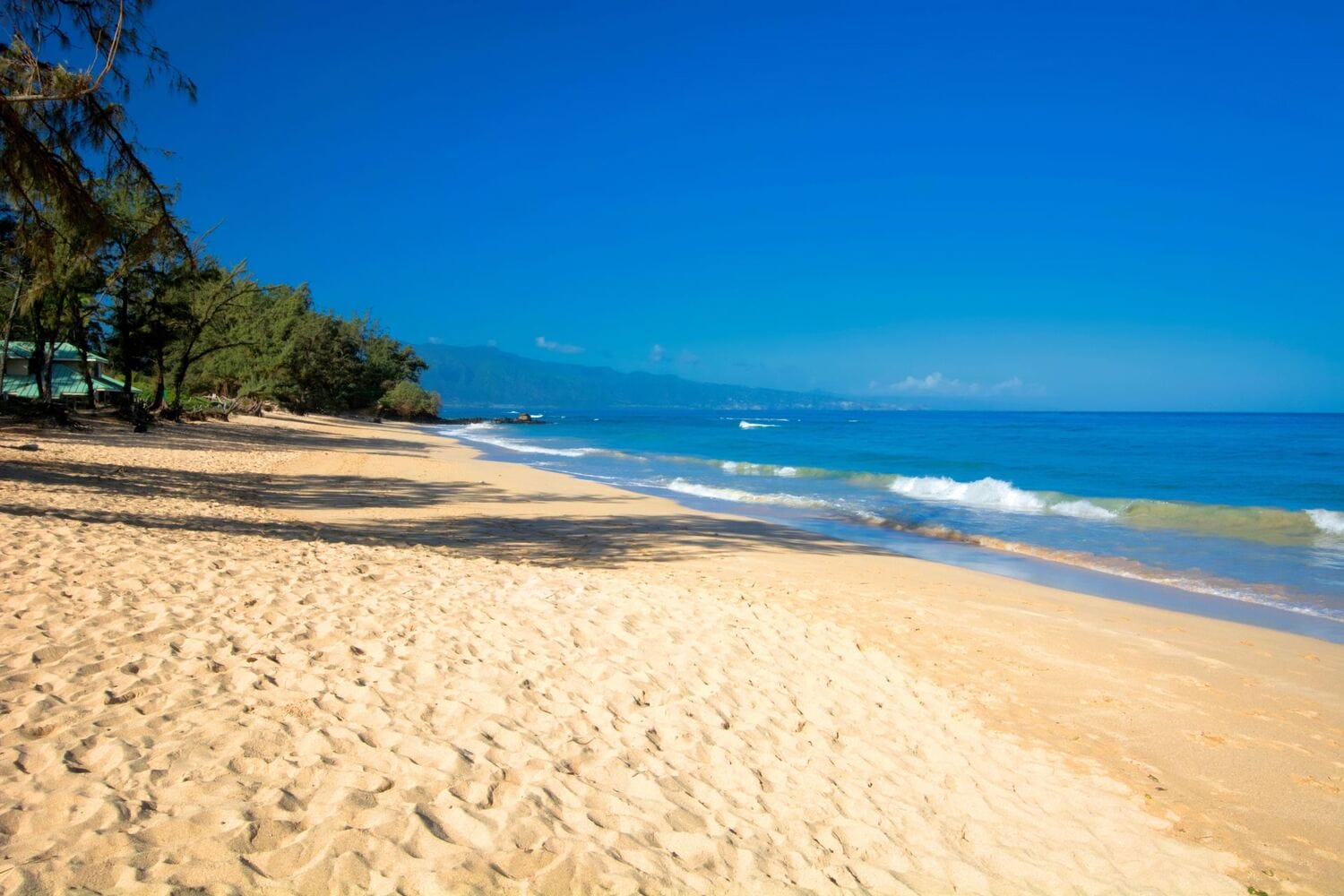
Best Time to Find the Fewest Crowds
If you are looking to avoid crowds then visit between January, February, September, October, and November. These months have lower visitor arrival numbers compared to the peak summer months or the holiday season when many families are on vacation. The average daily amount of people on the islands is much lower during the off-season.

Best Time for Hikers to Visit the Big Island
Each season provides a new and fun experience when hiking on the Big Island. Summer is great for enjoying a hike in the rainforests or summit areas that offer lots of shade. If you prefer cooler weather, the winter months are great for hikes along the coast in areas that are usually much too hot to handle during the summer months.
Spring is the perfect time for hikes where you will encounter waterfalls , as the previous months of rainfall will have them flowing at their fullest. Autumn is great because most of the trails will be nice and dry and offer cooler temperatures than what you experience during the summer.

Cheapest Time to Visit the Big Island
Hawaii isn’t necessarily a budget-friendly destination but finding the cheapest time to visit can allow you more opportunities for experiencing more while visiting. Hawaiian Airlines says visiting during the shoulder season, typically April and May, and September through November will offer the cheapest airfares. Avoiding major holiday periods and weekends can also offer cheaper fares.
Typically you can find hotel rooms at their cheapest in January and February and at their peak in the summer months, especially June and July. But these prices can be somewhat unpredictable.
Sometimes you can find hotel prices dropping lower in the months of May, September, and October. It all really just depends. Avoiding the Christmas and New Year holidays will ensure you avoid inflated prices. You can expect to see prices jumping about 33% higher than the rest of the year.
When is the Big Island Rainy Season?
Hawaii has 2 main seasons: Summer, known as “kau” to Hawaiians, runs from May to October, and winter, known as “hooilo”, runs from November to April. Summer offers warm temperatures, perfect for swimming in the ocean, and usually the calmest ocean conditions. But those conditions can change rather rapidly. The summer months, from June through November is also considered to be hurricane season.
However, it is very rare to experience any severe damage from them as most move away from the islands. Even with less of a chance of danger from them, they can create disruptions like heavy rains and high winds. The beaches may have to close until conditions improve, your tours could be canceled, and you might end up stuck inside.
Winter brings slightly cooler temperatures averaging about 78 degrees on the beaches according to the Hawaii Tourism Authority. You’ll see more precipitation during this time and even some occasional snow atop the summits of Mauna Kea and Mauna Loa. The Kona Coast is considered the leeward side and receives the least amount of rain each year, around 20 to 30 inches, as the east side, where the city of Hilo is located, gets soaked.
It gets a lot of rain, at least 100 inches per year. So, if you want the best chance of not having a soggy vacation you might want to plan your visit during the drier, summer months, and steer clear of Hilo.
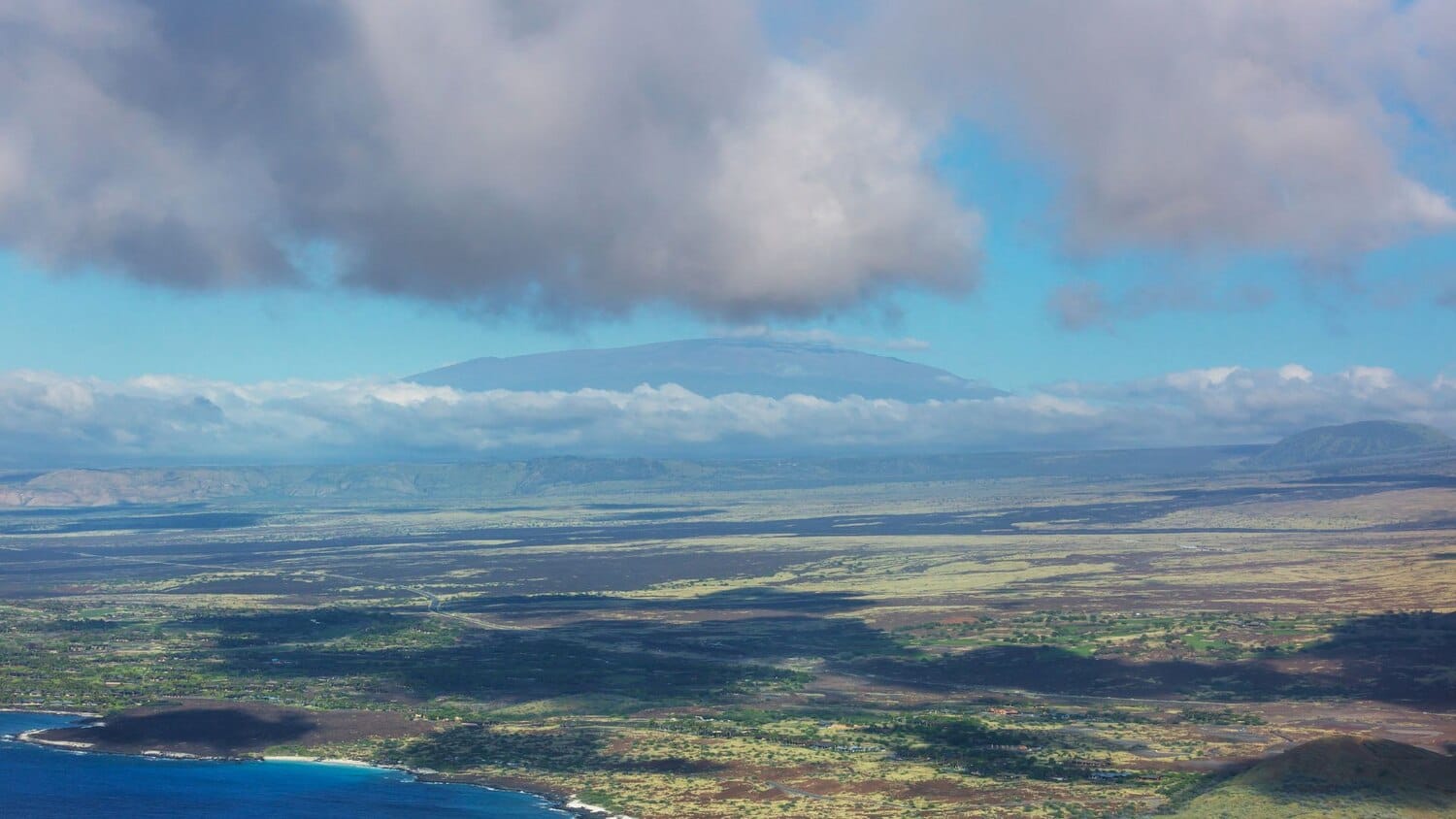
Big Island Weather Month By Month
Knowing what the weather is like will help determine what clothes to bring when packing your suitcases. Packing a light sweater is a good idea year-round. Here is what you can expect to see from one month to the next.
Big Island in January
The average temperature during the month of January is 82 degrees but remember those cooler nights. Hotel accommodations usually run around $350 but the prices might increase during the first week after New Year’s.
Big Island in February
You can expect mild temperatures around 80 degrees throughout the month of February but rainfall can increase during this time. It will cost a bit more to visit in February. Hotels average about $375 per night, though airfares will be a bit lower than what you find throughout the rest of the year.
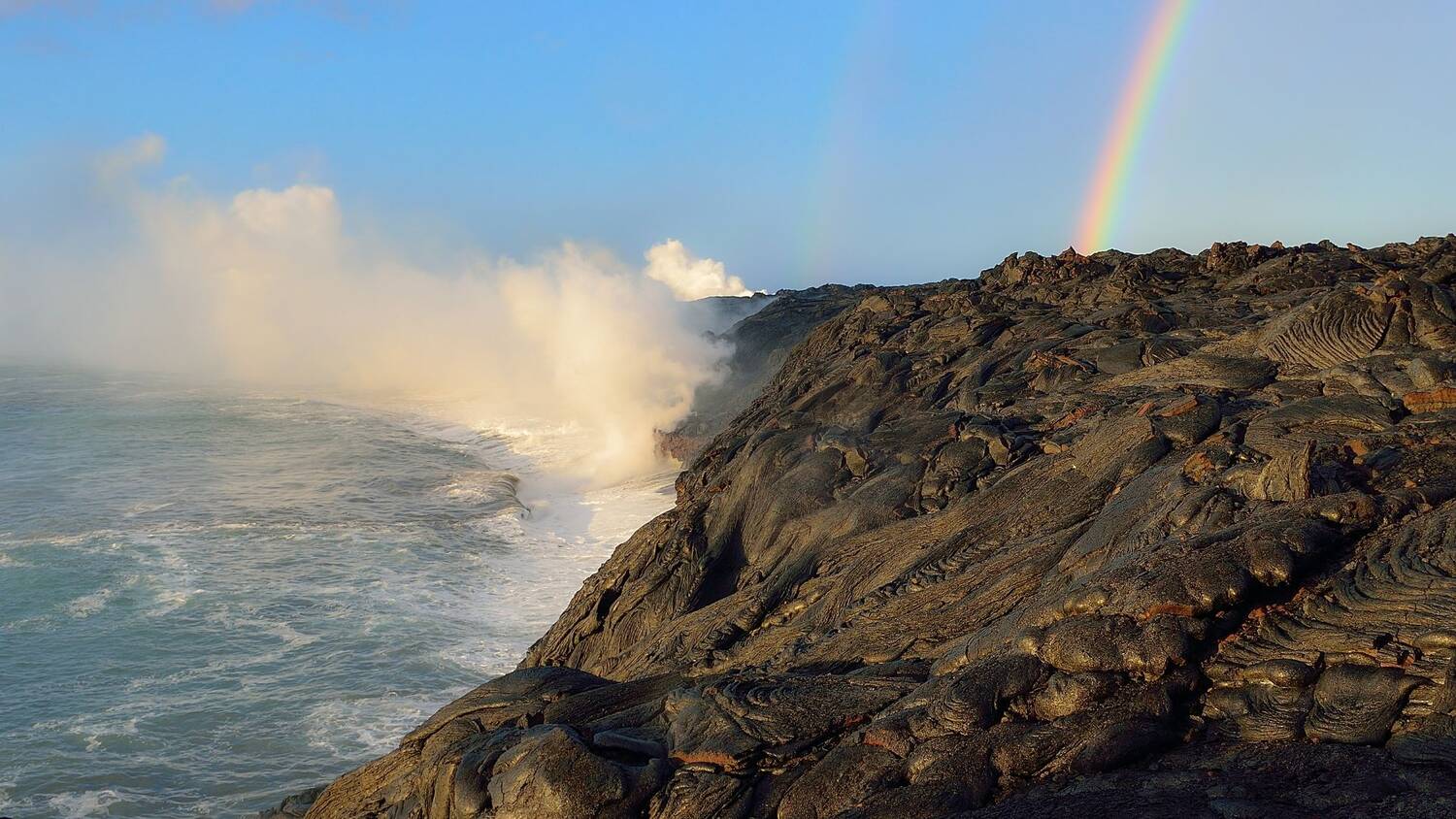
Big Island in March
Temperatures in March average around 80 degrees with plenty of sunshine throughout the day but remember to pack your light sweater for those evenings when it gets much cooler. It will also be more expensive to visit this time of year because many families go on Spring Break vacations. Expect hotels to be around $370.
March also brings us the annual Kona Coffee Cultural Festival on the Big Island and it’s a must for any coffee enthusiast. Enjoy learning the rich history of Kona Coffee while tasting coffee made right here on the islands.
Big Island in April
Spring is a fantastic time to visit the Big Island. With average temperatures around 80 degrees during the day and the calm ocean inviting you for a swim or some snorkeling you’re bound to find something you enjoy. Airfare and hotel prices dip this month and usually hover around $350 per night for your accommodations.
This time of year also offers a great chance to celebrate Lei Day, a popular holiday on all the islands. You’ll see celebrations from royal court processions, lots of Hula dancing and luaus and contests for the most gorgeous Lei. You’ll definitely want to watch those Hula dancers during the annual Merrie Monarch Festival honoring the islands’ proud heritage and native languages.

Big Island in May
The month of May offers even lower average prices than April for those wanting to stay in a hotel and airfare costs continue to be below average. Accommodations usually only run about $310. If you are a fan of music and cultural celebrations, visit in May to enjoy Mele Mei. It’s a festival on the island of Maui, held all month long.
May is one of the best times to visit the Big Island, even though rainfall does increase in many parts of the U.S. You won’t see the effects of those rainfalls on this Hawaiian island, as average daytime temperatures stay around 80 degrees with pleasant evening temperatures dipping only to about 60 degrees.
Big Island in June
As the weather really heats up to the high 80s, sometimes even low 90s, remember those evenings will cool things down a bit. But always bring your sweater. Hotel rates in June start out lower, usually around $365 but you will start to see an uptick in pricing the closer you get to July. June usually sees an average hotel cost of $395 per night.
This month also brings a significant cultural event on the 11th, King Kamehameha Day. King Kamehameha Day honors the legacy of the King Kamehameha I who unified the islands of Hawaii back in 1810. The most important and sought-after celebration on the island of Oahu is the Lei Draping Ceremony in Downtown Honolulu when a 30ft traditional Lei is carefully hung over the King’s massive statue. Many islands throughout the chain hold festivities you will not want to miss.

Big Island in July
Crowds continue to pick up in the month of July as families head off to celebrate Independence Day and the kids get out of school for summer break. And these crowds cause a huge impact on accommodations which usually cost between $380 and $395 per night.
All the islands, especially the Big Island offer fun events and exciting firework displays on July 4th, so be prepared for massive crowds if you want to watch those vibrant, celebratory shows in person.
Big Island in August
If you are on a budget you should probably steer clear of visiting the Big Island during August. Hotel costs can jump over $400 and be much higher. Those peak prices make perfect sense considering the fantastic summer weather this month boasts. You will see daytime temperatures hovering around the high 80s and nighttime temps offering a little respite by dipping down into the lower 70s.
If you can deal with those costs and potential crowds, be sure to check out the Ho’oku’i Kahi Establishment Day Hawaiian Cultural Festival which showcases traditional Hawaiian Music and ancient arts and crafts demonstrations and workshops.

Big Island in September
This is when crowds start disappearing from the islands and those high hotel costs from the summer begin to drop. September will be a bit cooler than August, with daytime temperatures in the low 80s and cooler nights with temperatures hovering in the lower 70s.
Those who love celebrating cultures should head to the Big Island to celebrate Aloha Festivals, a fun-filled month of celebrating native Hawaiians. Enjoy a massive street party, complete with unique craft booths and lots of great traditional food. Enjoy lively musical celebrations and even the colorful floral parades honoring the unification of all of Hawaii.
Big Island in October
If you’re wondering if October is one of the best times to visit the Big Island, you’d be right. Expect to see temperatures drop a little but you’ll still enjoy some nice, warm days in the high 70s. Hurricane season is still going strong though so be mindful of that. Hotel prices and airfares are really nice, with the average hotel costing only around $325 per night.
If you want the ultimate celebration, visit the Hawaiian islands to experience the three-week-long annual Hawaii Food & Wine Festival, which takes place throughout multiple islands.

Big Island in November
If you want warm beach days but cooler nights with minimal crowds you should definitely visit the Big Island in November. It’s an ideal time, especially with the hotels costing between $325 and $340 for most of the month.
Big Island in December
The average daily rate for hotels jumps back up this time of year as vacationing families start showing up. Expect to pay between $375 and $465 depending on when you arrive. But that’s what happens when the crowds start showing up and celebrating the Christmas and New Year’s holidays.
While choosing the cheapest time of year to visit can impact your wallet’s happiness, other factors might change your decision. Finding that balance will make for the best Hawaiian vacation.

Conclusion:
When you’ve finished figuring out when is the best time to visit the Big Island and save money it will be time to start planning all those fun, exciting activities you want to do. No matter what time of year you go there is always something amazing to discover on this incredible Hawaiian island.
Frequently Asked Questions
What is the best month to visit Big Island?
If you’re looking for a balance of good weather, smaller crowds, and affordability, September and October are generally considered the best months to visit the Big Island. These months mark the “shoulder season” when the summer crowds have thinned out and the prices for accommodations and airfare tend to be more reasonable.
What is the cheapest time of year to visit Hawaii?
Traveling to the Big Island tends to be most affordable during the shoulder seasons: late spring (April-May) and early fall (September-November). You’ll generally find lower prices for both flights and accommodations during these months. If your dates are flexible and saving money is a priority, try aiming for a trip during these periods.
What is the rainy season on the Big Island?
The Big Island’s rainy season typically runs from November to April. While rain showers can be expected, they are often brief and can bring refreshing breaks from the tropical warmth. Also, it is much drier on the leeward side (western coast) of the island.
If you’re looking to maximize sunny days, consider visiting outside these months. Just remember, the Big Island is vast, and even during the rainy season, there’s often sunshine in different parts of the island.
What are the best and worst months to visit Hawaii?
Determining the “best” and “worst” months depends on your priorities and travel style. If you want to avoid crowds and high prices, it’s best to skip June, July, and December. For smaller crowds and decent weather, September, October, April, and May are excellent choices. Remember, weather can be variable in Hawaii, so it’s always wise to check forecasts and pack for a range of conditions.
Share:
